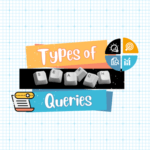In the modern world, where technology integrates deeply into every aspect of our lives, the ability to translate complex technical information into clear, concise, and accessible language is not just valuable but essential. This is where technical writing comes into play. Specifically, technical writing involves the creation of useful documents that explain technology, processes, and procedures in a manner accessible to the intended audience, whether they are professionals in a specific industry or everyday users.
In addition, at The Zulfis, we specialize in technical writing, making technology and processes understandable and impactful across industries.
What is Technical Writing?
Technical writing is a specialized form of documentation that helps users understand and use technology or processes effectively. Also, it serves as a critical bridge between the people who design, manufacture, operate, or maintain equipment and systems and their target audience, for example, the users or clients who need to understand these tools without a technical background. However, this form of writing is not limited to manuals or instructions; rather, it encompasses a wide range of documents, including white papers, standard operating procedures, technical proposals, product descriptions, and user guides.
Importance of Technical Writing Across Various Industries
Technical writing is a cornerstone across various sectors, significantly enhancing user interaction with complex systems and adherence to industry standards. Furthermore, here's a detailed look at how technical writing impacts several key industries:
Technology and Software
Explore how technical documentation enhances user interaction and troubleshooting in software applications. For Example:
User Manuals and Help Files: Provides step-by-step guidance to users, helping them to effectively use and troubleshoot software products. Technical writing skills are also utilized in instruction manuals, installation instructions, and end-user documentations, etc.
Frequently Asked Questions (FAQs): Addresses common user questions, reducing the need for direct customer support and increasing user satisfaction and product usability.
Manufacturing
Operating Manuals: Documents on engineering purposes and engineering specifications, which detail the step-by-step process of operating machinery, are essential for ensuring equipment's safe and efficient use.
Troubleshooting Guides: It helps identify problems and provide solutions, minimizing downtime and maintenance costs.
Maintenance Manuals: Essential for the routine upkeep and long-term care of machinery, ensuring longevity and optimal performance.
Healthcare
Clinical Protocols: Guides healthcare professionals on the standard procedures for care, which is critical for patient safety and treatment efficacy.
Patient Instructions: Ensures patients understand their treatment plans, enhancing compliance and health outcomes.
Regulatory Submissions: Vital for gaining approval to market new drugs and treatments and ensuring compliance with governmental regulations.
Engineering
Project Proposals: Outlines engineering project scope, budget, and blueprint, essential for securing stakeholder approval and funding.
Product Specifications: Helpful for end-user documentation since it provides detailed descriptions of engineering products that guide manufacturing, testing, and quality assurance processes.
Environmental Impact Assessments: Evaluate the potential environmental effects of projects, which are crucial for regulatory approval and sustainable development.
Key Benefits Across Industries
While technical writing has some great benefits, we've outlined the main perks of technical writing for any industry or business:
Enhancing Clarity: It makes complex information more accessible, improving user competence and reducing errors, and leads to effective communication.
Compliance and Safety: Ensures products and practices comply with relevant laws and safety standards, reducing legal risks.
Customer Satisfaction: Increases reliability and user-friendliness of products and services, enhancing customer trust and loyalty.
Overall, as industries continue to develop alongside rapid technological advancements, the role of technical writing becomes increasingly vital. At The Zulfis, our technical writing services support the successful deployment and operation of products and services and ensure that innovations are understandable and accessible to all. Moreover, this fosters a broader and more effective implementation of technological advancements. Learn more about our services here.
Defining Technical Writing
Technical writing is a discipline marked by a clear, direct approach to communicating information rooted in the technical, scientific, and engineering fields. Also, this form of writing is designed to convey complex information to those who need it to solve a problem or carry out a specific task. The Society for Technical Communication (STC) defines technical writing as "the process of researching, creating, and presenting specialized information to a specific audience." Moreover, It serves a functional purpose, delivering necessary information in a format that is easily accessible and comprehensible to its intended audience.
Formal Definition of Technical Writing
Technical writing involves creating documentation for complex processes, systems, and procedures. Furthermore, it translates technical and scientific data into readable text for a specific audience. The technical documentation includes project plans, user manuals, training materials, software test plans, and administrative guides—any material that deals with technical information. However, the content is factual and intended to inform and instruct rather than entertain the target audience.
Differences Between Technical Writing and Other Forms of Writing
Technical writing is distinct from other types of writing due to its specialized content and purpose. Here are some key differences between technical writing and other forms:
Technical Writing vs. Creative Writing
Creative Writing focuses on storytelling and entertainment. Also, it is subjective, aimed at evoking emotions, and often explores beliefs, thoughts, and feelings. Technical Writing, on the other hand, aims to clarify and inform about technical subjects. It is objective, precise, and devoid of embellishments, focusing on instructing or informing rather than entertaining.
Technical Writing vs. Academic Writing
Academic Writing involves writing to discuss and analyze scholarly information. Often used in educational settings, it includes theses, scholarly articles, and academic presentations. Moreover, academic writing requires a formal tone and adheres to strict formatting guidelines.
Technical Writing, meanwhile, may also adhere to strict format guidelines, its primary goal is functionality and clarity. In addition, technical documents are practical, directing the reader on how to operate a device, comply with regulations, or execute a procedure efficiently.
Technical Writing vs. Business Writing
Business Writing encompasses a wide range of document types, including emails, business letters, memos, and reports. Its purpose is often geared towards operational business details, persuasion, or transactions.
Technical Writing is more specialized than general business writing, focusing specifically on technical or technological subjects. It supports user understanding of complex systems and is crucial for software integration, engineering projects, or medical procedures.
Technical Writing vs. Journalistic Writing
Journalistic Writing aims to inform and sometimes entertain the public with news articles, feature stories, and editorials. Moreover, it is timely, often subjective, and seeks to provide readers with a comprehensive view of an event or topic.
Technical Writing has timelessness as a characteristic, focusing on providing detailed and precise instructions or explanations. However, it does not aim to persuade or entertain but to educate its audience about specific technical topics.
In essence, technical writing is about clearly and efficiently communicating specialized information. Its utility spans various industries, highlighting its critical role in disseminating complex data. In addition, as industries evolve and technology advances, the demand for skilled technical writers remains robust, underscoring the importance of precise, clear, and effective technical communication.
Have any questions or need our services? We're here to help! Contact us, and let's start a conversation.

Historical Context and Evolution of Technical Writing
Brief History of Technical Writing
Technical writing has roots in ancient civilizations. Historically, it was pivotal in documenting technical processes and inventions. For example, early technical documents include user manuals for complex machinery and guides for agricultural practices written by the Sumerians and Egyptians. Furthermore, during the Industrial Revolution, technical writing began to take a more formal shape, with manuals and documentation becoming essential for the new machinery and processes introduced during that era.
How Technical Writing Has Evolved with Technology
The evolution of technical writing closely mirrors advancements in technology. Technological writing expanded significantly with the introduction of personal computers and the Internet. The digital age transformed technical documents from hardcopy formats to dynamic digital content, like online help systems and e-learning courses, enhancing accessibility and interactivity. Moreover, the rise of software development in the late 20th and early 21st century necessitated detailed documentation for end-users, including APIs and SDKs, highlighting the need for precise and clear technical writing. The integration of multimedia elements and the shift towards user-centered documentation are among the recent trends in technical writing, propelled by ongoing technological innovations.
Characteristics of Technical Writing
Clarity and Precision
Clarity and precision are the cornerstones of effective technical writing. In addition, this type of writing requires the author to convey complex ideas and information unambiguously, using straightforward language and technical terms appropriate for the audience's level of expertise. On the other hand, precision involves using exact figures, defined technical terms, and detailed descriptions to eliminate confusion about the discussed topic.
Objectivity
Technical writing strives for objectivity, focusing on facts and data rather than subjective opinions. Moreover, this characteristic is crucial because technical documents often serve as instructional or reference materials that guide users in performing tasks or understanding complex systems. The content, usually technical knowledge, should be unbiased, relying on verifiable information to support claims.
Structure and Format
A well-organized structure and format ensure that technical documents are easy to follow and understand. Conversely, this includes using headings, subheadings, bullet points, and numbered lists to break down information into manageable sections. The format should be consistent throughout the document to help readers locate the necessary information quickly.
Accessibility
Accessibility in technical writing means making the content reachable and comprehensible to as wide an audience as possible, including those with disabilities. Furthermore, this involves using clear language, providing alternative text for images, and designing navigable and readable documents with assistive technologies. Ensuring accessibility helps reach a broader audience and comply with legal standards.
Types of Technical Documents
User Manuals and Instruction Guides
User manuals and instruction guides are quintessential technical documents providing step-by-step instructions to help users understand and operate products or software effectively. However, these guides are designed to be practical, with clear illustrations and minimal technical jargon, ensuring they are accessible to users at all levels of technical proficiency.
Technical Reports and White Papers
Technical reports and white paperTechnical reports and white papers are formal documents that communicate research findings, technical concepts, methodologies, and policy discussions. White papers are typically used to present a problem and propose a clear solution, aiming to influence policy or business decisions.
API Documentation and Product Descriptions
API documentation provides developers and software engineers with guidelines on how to use and integrate APIs effectively. In contrast, product descriptions offer concise and precise explanations about the features and benefits of products tailored to assist potential buyers in making informed decisions. These documents serve distinct purposes in technical communication.
Proposals and Feasibility Studies
Proposals outline a plan of action, aiming to persuade the reader to support a project or idea. However, feasibility studies assess the viability of a proposed project or system in terms of technical, economic, legal, and scheduling considerations, providing a foundation for decision-making.
Role of a Technical Writer
Core Responsibilities and Daily Tasks
A technical writer's primary responsibilities involve creating, updating, and maintaining technical documentation. In addition, Daily tasks may include researching product features, collaborating with subject matter experts, and revising documents based on user feedback and testing. Effective technical writers write clearly and concisely and ensure their documents comply with industry standards and are user-friendly.
Industries Where Technical Writers Are in Demand
Technical writers are essential in various industries, including technology, healthcare, and engineering. In the tech industry, they prepare documentation for software applications and hardware. Similarly, healthcare technical writers focus on medical equipment manuals and regulatory documents, while those in engineering might write specifications, operational procedures, and safety guidelines. Moreover, the demand for technical writers is increasing as industries recognize the value of clear and effective communication.

Process of Technical Writing
Steps Involved in Creating a Technical Document
The process of creating a technical document involves several key steps:
- Planning: Define the purpose of the document and outline the content.
- Research: Gather necessary information from credible sources and subject matter experts.
- Writing: Draft the document using clear, concise, and precise language.
- Reviewing: Obtain feedback from peers and stakeholders.
- Revising: Incorporate feedback and refine the document for clarity and accuracy.
- Publishing: Finalize the layout and publish the document in the required formats.
Importance of Research and Understanding the Audience
Research is critical in technical writing to ensure the accuracy and relevance of the information provided. Additionally, Understanding the audience is equally important, as it influences the document's language, structure, and depth of information. Therefore, a technical writer must adapt the content to match their intended readers' knowledge level and expectations, which may vary widely from novices to experts.
Revision and Editing Processes
Revision and editing are integral to the technical writing process, ensuring the document is error-free and meets all specifications. However, this includes checking for grammatical and syntactical errors, consistency in terminology and formatting, and alignment with the overall objectives of the document. Moreover, peer and technical reviews are often employed to enhance the quality and reliability of the technical content.
Skills Required for Technical Writing
Essential Writing Skills
Effective technical writers must have impeccable writing skills, including a strong grasp of grammar and style, the ability to write with clarity and precision, and the ability to organize information logically. Additionally, they should be proficient in adapting their writing style to suit different audiences and purposes.
Technical Skills and Subject Matter Expertise
Technical writers often need a good understanding of the fields they are writing about. Depending on the industry, this could involve knowledge of software tools, engineering principles, or scientific concepts. Moreover, understanding and translating complex technical information into understandable content is crucial. This process requires not only technical expertise but also the ability to communicate effectively to non-technical audiences.
Communication and Collaboration Skills
Strong communication and collaboration skills are essential, as technical writers frequently work with cross-functional teams, including engineers, product managers, and customer support. Furthermore, these skills help in effectively gathering information, understanding user feedback, and coordinating with other team members to produce a comprehensive and coherent document.
Visit our blog now to improve your abilities and learn about technical writing and other topics from professionals!

Tools and Technologies Used in Technical Writing
Like many other professions, technical writing relies heavily on specialized tools and technologies to enhance the efficiency and quality of its outputs. In addition, these tools not only aid in creating clear and concise documents but also help manage the complex information and data integral to technical documentation.
Software Tools
MadCap Flare
This is a state-of-the-art technical authoring and publishing software for technical writers and content developers. It's widely used for its ability to produce complex documentation across multiple formats, including HTML5, PDF, Microsoft Word, and others. Furthermore, its single-source publishing feature allows writers to create content once and publish it across various channels without additional formatting.
Adobe FrameMaker
Designed for writing and editing large or complex documents, Adobe FrameMaker is a favorite among technical writers working with structured and unstructured content. It supports XML/DITA. Additionally, its powerful tools easily manage document complexity, making it suitable for detailed scientific or technical documents.
Microsoft Visio
Often used for creating diagrams, flowcharts, schematics, and other visual aids that accompany technical texts. On the other hand, these visual elements are crucial for technical documents as they help clarify complex information, ensuring that the reader can visually understand the processes and systems being described.
Impact of New Technologies on Technical Writing
Artificial Intelligence (AI) and Machine Learning
AI technologies are beginning to transform technical writing by automating routine tasks such as spell-checking, grammar corrections, and even content creation. Furthermore, Machine learning algorithms can analyze existing documentation to identify patterns, suggest improvements, or highlight areas requiring updates.
Natural Language Processing (NLP)
Tools based on NLP are improving the way technical writers create content. In addition, they help understand and generate language-based data, enabling the software to assist writers in creating more natural and user-friendly instructions and descriptions.
Content Management Systems (CMS) with AI Capabilities
Advanced CMSs can now use AI to help manage and optimize content organization. Moreover, they support technical writers by providing tools for effective data storage, retrieval, and systematic structuring of technical documents, which are often part of larger systems.
Challenges in Technical Writing
Despite the advanced tools and technologies available, technical writing has challenges. Thus, these difficulties must be navigated carefully to ensure the production of high-quality, effective technical documentation.
Keeping up with Technological Advancements
One significant challenge for technical writers is the speed at which new technologies are developed and old ones are phased out. However, writers must continually learn and adapt to these changes to ensure their documentation remains relevant and accurate.
Translating Complex Information into Accessible Language
Complexity of Information
Technical writers often deal with complex subject matter — detailed software functionality, advanced engineering processes, or intricate scientific data. Conversely, the challenge lies in deciphering and translating these complexities into clear, understandable text without oversimplifying the critical technical nuances.
Diverse Audience
Technical documentation may be used by experts familiar with the jargon and novices who require simple explanations. Therefore, balancing these needs to communicate effectively with a diverse audience can be particularly challenging.
Moreover, these challenges highlight the dynamic and evolving nature of technical writing at The Zulfis Company. As technology progresses, so must the tools, skills, and methodologies of technical writers at The Zulfis. However, this ensures that they can continue to produce effective, timely, and accessible content that meets the needs of their varied audiences.
Conclusion
In conclusion, technical writing is a critical ability that connects intricate technology to a wide range of sectors. Furthermore, its development alongside technology underscores how crucial it is to successful and transparent communication. Last but not least, technical writers are increasingly in demand as technology evolves, highlighting the essential nature of their work.
Transform your technical documentation with The Zulfis—explore our services and contact us today!



